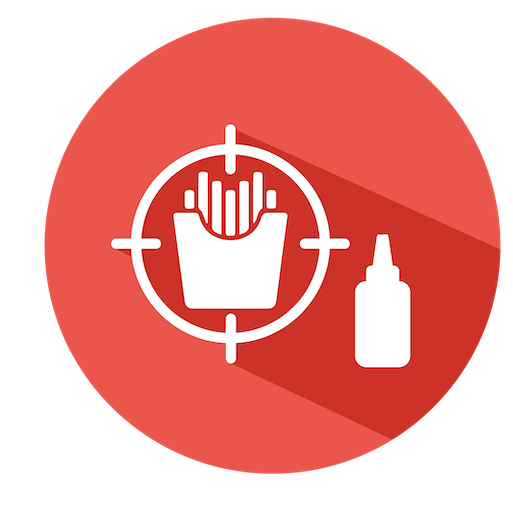How to turn complementary products into a marketing tool?
Relevant topics Archive, Conversion
Imagine that you are a retail store manager who has an oversupply of hot dogs. To boost sales, you decide to create an 'outdoor barbeque' display by placing a variety of complements (e.g. condiments, buns, napkins, plastic forks, and beer) on top of the case containing the hot dogs.
Would such a strategy be successful at attracting shoppers to view the hot dogs? If so, how should you design the display of complements to maximize shopper attention?
The Salient Power of Complementary Product
In-store marketing strategies play an important role in drawing attention to products in a retail setting. This is mostly because consumers make many of their decisions unplanned.
One in-store strategy is to use complementary ‘other products’ as a marketing tool to increase sales of a focal product. Complements can enhance the value of focal products.
For instance, a consumer seeing the barbeque display may be primed to construct meal possibilities, making them more likely to buy hot dogs.
However, how are complementary products displays (CPD) effective at capturing consumers’ attention and transferring it to an associated focal product, increasing their likelihood of choosing the focal product?
The Role of Visual Complexity
According to neuromarketing theories of selective attention and cognitive load, the human brain has a limited capacity for visual attention. Because of this, people filter sensory inputs based on certain physical characteristics of visual stimuli. A rich literature has sought to understand what properties of visual stimuli are most likely to attract selective attention. For instance, research has found that design features such as shape and contrast can dominate the initial phase of the search.
A defining characteristic for any in-store display of complementary products is it's visual
Complexity. Defined as “the amount of variety or diversity in a stimulus pattern.”
The complexity of a CPD may depend on several factors, such as the variety of colors, sizes, and shapes of complementary products in the assortment. Low-complexity CPDs can simplify consumers' decision tasks, whereas high-complexity CPDs provide consumers with a wide range of options that enhance or augment the focal or main product.
High-complexity CPDs are great at grabbing consumers’ attention because they contain an assortment of products that vary on one or more dimensions, such displays should contrast with the background and ‘pop out,’ capturing consumers’ attention.
This assertion is consistent with research showing that stimuli with high "design complexity", or complexity that is based on variation in shapes, objects, and arrangements, can draw and hold peoples' attention because it is more likable, interesting, and engaging. It is also consistent with findings in the choice overload literature, whereby consumers were initially more attracted to and engaged with high-versus low-complexity assortments, even though they ended up being less likely to choose from these assortments.
These theories are useful in determining attention capture but seem somewhat less useful in suggesting a mechanism for attention transfer. This then leads us to another interesting theory.
Newneuromarketing is looking for new authors! Are you up for the job?
Send us an e-mail at tim@newneuromarketing.com to become an author and start spreading knowledge.
How Attention Is Transferred
The Guided Search Theory suggests that ‘bottom-up’ search processes (those that are stimulus-driven) combine with ‘top-down’ search processes (those that are goal-driven) to guide attention during a multi-step search.
Guided Search Theory explains how using complementary products can trigger a "bottom-up" search process that can lead to a "top-down" search and direct their attention to the focal or main product.
For instance, a consumer may initially attend to a brightly colored package in a retail display (bottom-up), but subsequently, direct their attention to the products in that display that best satisfy their current needs (top-down).
Stimuli involved in bottom-up processes can have associations that influence top-down search.
How High Complexity CPDs Influence Consumers Decision-Making
After consumers attend to the CPD, Guided Search Theory suggests that associations with the complementary product category trigger top-down search goals that direct consumers’ attention to the focal product.
For example, viewing an assortment of condiments commonly used on hot dogs may trigger a goal to look for the hot dogs themselves. Thus, longer consumer attention to the CPD should result in increased consideration and, thus, increased likelihood of choosing the focal product.
Thus, the presence of a high-complexity CPD will increase the likelihood of consumers choosing an associated focal product.
Although visual complexity can affect attention, research has found that complexity featuring a structured variation in shapes, colors, and sizes increases attention towards stimuli because it makes them more interesting, likable, and engaging. Additionally, studies have shown that consumers pay more attention to shelf arrangements that have visually salient attributes, such as bright colors.
Research has shown that the higher the visual complexity of the CPD, the greater the amount of consumer attention it will capture. And the greater the amount of consumer attention that the CPD captures, the greater the amount of attention the focal product will capture.
Visual attention on the focal product should increase its probability of choice. For example, a mere exposure effect, such that longer gaze durations could lead to an increased preference for an alternative. This is because of the relationship between attention capture and eventual product selection.
This means, the greater amount of attention the focal product captures, the more likely consumers will be to choose it.
So, the transfer of attention from the CPD to the focal product will mediate the effect of CPD complexity on the choice of the focal product. This is because greater attention to the focal product should increase the likelihood that consumers will choose it.
Implications for Brand Managers
Brand managers must realize the barrage of problems going against them. Today, products not only compete for consumer attention, but also with consumers' cell phones, friends, and other distractions.
Adding petrol to fire, people also tend to be creatures of habit. Regular customers who are familiar with the store and its displays often take their “regular route” and do not notice products other than those they are searching for.
The need for “upping our game" when it comes to planning in-store marketing strategies has never been so relevant. One great way is strategically displaying complementary products near focal products, as research shows that strategically placing displays of complementary products can increase sales of an associated focal product.
Importantly, however, you should be aware of how visually salient the CPDs they place is. While much attention was placed on visual complexity as a factor that increases the salience of a CPD, you may also want to use other strategies to enhance visual salience, such as the size of the CPD.
This can also be a particularly effective way of marketing products not in the direct sight of consumers (freezers, meat, lower shelves, etc.).
Thus, instead of using CPDs to market focal products that already occupy premium shelf space, managers may want to use them to drive attention to products that are stacked somewhere, either because they are not at eye level or because they are stored in some sort of container.
There is so much possibility.
You can also apply this to get rid of (sell) products that are in excess supply much faster. In that case, the product in high supply becomes the focal product.
The most important thing is to keep on testing until you find the right combination.
Take-Home Points:
- Consumers are more likely to pay more attention to shelf arrangements that have visually salient attributes.
- Consumers are more attracted to extensive-choice displays than limited-choice displays (even though they are less likely to choose from these displays).
Further Reading
-
How to create the perfect shelf based on product lightness
Generally, when visiting a supermarket, you don't want to waste your precious time by searching for the products you're looking for. In order to help us making decisions, our brains have a few biases in their way of seeing things.
We all know that marketeers are trying to get their products in the centre of a display, and that’s for a very good reason. However, new research shows that there’s another bias that influences our way of checking products. Apparently, our visual attention tends to automatically focus to the upper part of a display when we’re looking for a light-coloured product, and to the bottom for a dark coloured product.


